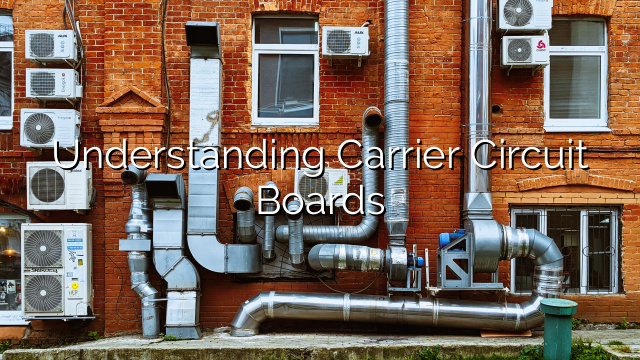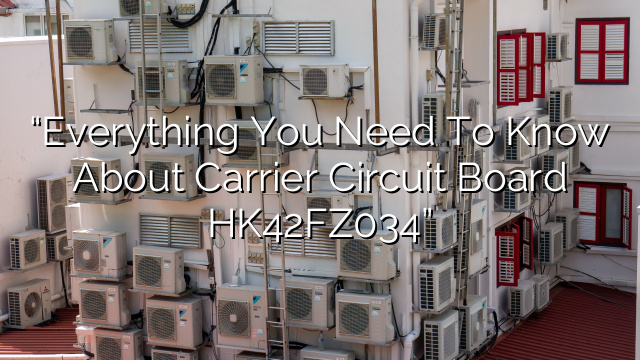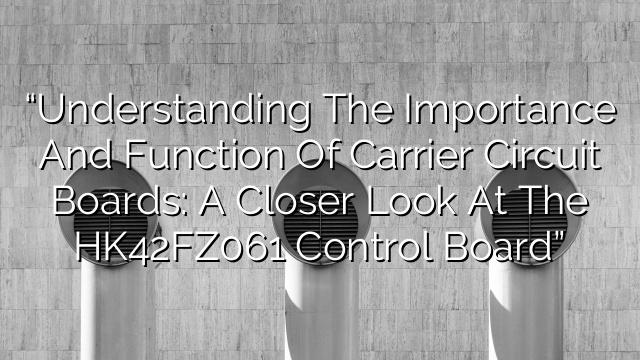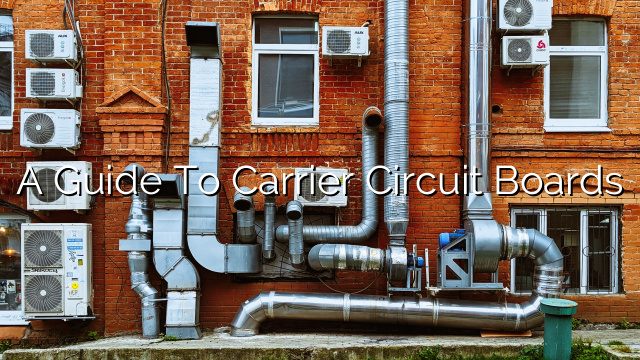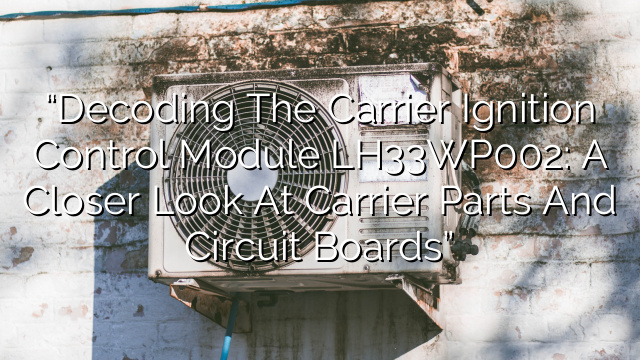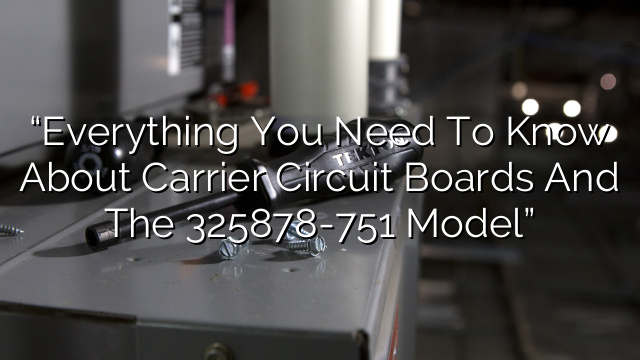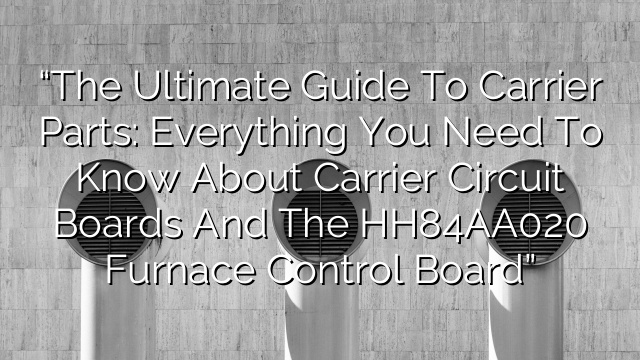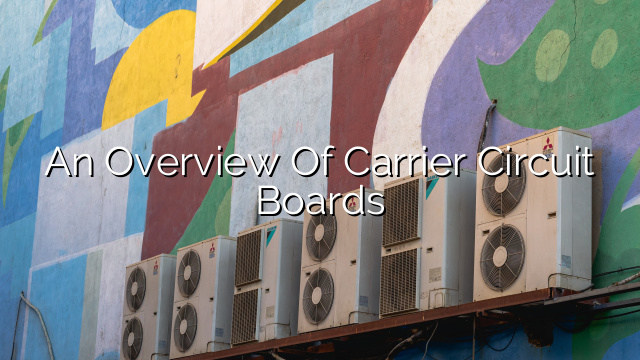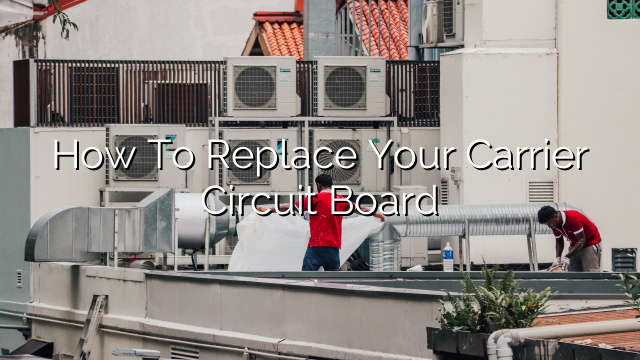Introduction
If you own a Carrier air conditioning or heating system, understanding the role of the circuit board is essential. The circuit board is the brain of your HVAC system, responsible for controlling and coordinating all the functions and components. In this blog post, we will dive deep into the world of Carrier circuit boards, discussing their importance, common issues, and troubleshooting tips.
What is a Circuit Board?
A circuit board, also known as a control board or PCB (Printed Circuit Board), is a vital component of an HVAC system. It acts as a central hub that connects and controls all the electrical components, making it possible for your air conditioner or heater to function properly. The circuit board uses electrical signals to communicate with different parts of the system, ensuring they work together seamlessly.
The Role of the Carrier Circuit Board
Carrier circuit boards are specifically designed for Carrier HVAC systems. They play a crucial role in maintaining the integrity and performance of your air conditioner or heater. Here are some key functions performed by a Carrier circuit board:
- Control and Regulation: The circuit board regulates and controls various operations, including temperature settings, fan speed, airflow, and more. It ensures that the system operates at the desired level of comfort.
- Error Detection: Carrier circuit boards are equipped with advanced sensors and tools that can detect and diagnose issues or errors within the system. This allows for quick troubleshooting and timely repair.
- System Protection: The circuit board acts as a protective barrier for your HVAC system. It monitors power supply, voltage levels, and temperature fluctuations, preventing any damage to the system components.
- Communication Interface: Carrier circuit boards provide a communication interface between the HVAC system and external devices, such as thermostats or smart home technologies. This enables easy integration and automation of your heating and cooling system.
Common Issues with Carrier Circuit Boards
While Carrier circuit boards are built to be durable and reliable, they can still experience issues over time. Here are some common problems you may encounter:
- Component Failure: Due to the complex nature of circuit boards, individual components can fail or malfunction. This could be caused by a variety of factors, such as power surges, wear and tear, or manufacturing defects.
- Corrosion: Moisture or humidity can lead to corrosion on the circuit board, causing it to malfunction or short circuit. Corrosion can occur if there are any leaks or if the HVAC system is located in a humid environment.
- Power Supply Issues: Problems with the electrical power supply, such as voltage spikes or inconsistent power, can damage the circuit board. This can result in erratic behavior or complete failure of the HVAC system.
- Software or Firmware Errors: Occasionally, issues can arise due to bugs or errors in the software or firmware running on the circuit board. This can cause the system to behave unpredictably or not function at all.
Troubleshooting Carrier Circuit Board Issues
If you are experiencing problems with your Carrier HVAC system, it’s important to determine if the issue lies with the circuit board. Here are some troubleshooting steps you can take:
- Check for Power: Ensure that your HVAC system is receiving consistent power supply. Check the circuit breaker, fuse, and any applicable switches to make sure they are functioning properly.
- Inspect for Damage: Visually inspect the circuit board for any signs of damage, such as burnt marks, loose connections, or corrosion. If you notice any issues, it may be time to replace the circuit board.
- Clean Dust and Debris: Over time, dust and debris can accumulate on the circuit board, affecting its performance. Use a soft brush or compressed air to gently clean the board, removing any build-up.
- Restart the System: Sometimes, a simple system restart can resolve minor issues. Turn off the HVAC system, wait for a few minutes, and then turn it back on. This can help reset the circuit board and clear any temporary glitches.
- Contact a Professional: If you are unable to identify or fix the problem on your own, it’s best to contact a trained HVAC technician. They have the expertise and tools to diagnose and repair circuit board issues accurately.
FAQs
Q: How long do Carrier circuit boards typically last?
A: Carrier circuit boards have an average lifespan of 10 to 15 years. However, this can vary depending on factors such as usage, maintenance, and environmental conditions.
Q: Can I replace a Carrier circuit board myself?
A: While it is technically possible to replace a Carrier circuit board yourself, it is highly recommended to have it done by a professional. HVAC systems can be complex, and improper installation of the circuit board can lead to further issues or void warranties.
Q: How much does it cost to replace a Carrier circuit board?
A: The cost of replacing a Carrier circuit board can vary depending on the specific model and system requirements. On average, you can expect to pay between $200 and $600 for the part itself, excluding any labor or additional fees.
Q: Are there any preventive measures I can take to prolong the life of my Carrier circuit board?
A: Yes, there are several preventive measures you can take to maintain the health of your circuit board. These include regular HVAC system maintenance, keeping the area around the system clean and free from debris, and avoiding exposure to excessive moisture or humidity.
Conclusion
Understanding the role and importance of a Carrier circuit board is crucial for the proper functioning of your HVAC system. By familiarizing yourself with common issues and troubleshooting tips, you can ensure the longevity and efficiency of your air conditioner or heater. If you are unsure or unable to resolve any circuit board issues, it’s always best to seek professional help from a certified HVAC technician.

